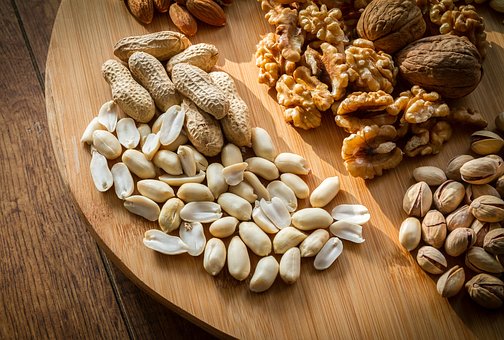Enjoying a variety of your favorite nuts and seeds is a great way to benefit from heart-healthy unsaturated fats, including omega-3 fatty acids. Nuts and seeds are also high in plant-based protein, fiber, folate, magnesium, antioxidants like vitamin E and selenium, and phytochemicals. However, both nuts and seeds can be very high in calories, so a little goes a long way! A good goal is to replace less healthy fats in your diet, like saturated fats, and to enjoy reasonably sized portions of nuts and seeds.

How Should I Buy and Store Them?
The best nuts and seeds to buy are either raw or dry roasted. Avoid those that are heavily salted, honey roasted, flavored, or roasted in oil. Buying nuts in their shells can also help with portion control since it takes time to shell them.
Because of their high fat content, nuts and seeds can go rancid. The shelf life depends on the type of nut/seed and the amount of exposure to light, heat, and moisture. The best way to store them is in an airtight container in the freezer.
Easy Ways to Add Nuts and Seeds to Your Diet
- Measure out 1 ounce of nuts into individual bags or containers for quick snacks.
- Sprinkle nuts or seeds on your cereal, yogurt, fruit, vegetables, salads, or pasta dishes.
- Add nuts or seeds to the batter when making muffins, pancakes, cookies, cakes, breads, or brownies.
- Add nut or seed butters to your toast, apples, or bananas. Natural peanut butter is a good option, as are almond or sunflower butters.
How Much is an Ounce?
- 49 pistachios
- 30 peanuts
- 23 almonds
- 19 pecan halves
- 21 hazelnuts
- 18 cashews
- 14 walnut halves
- 85 pumpkin seeds
Did You Know?
In 2003, the FDA approved the health claim: “Scientific evidence suggests but does not prove that eating 1.5 ounces per day of most nuts, as part of a diet low in saturated fat and cholesterol, may reduce the risk of heart disease.”


